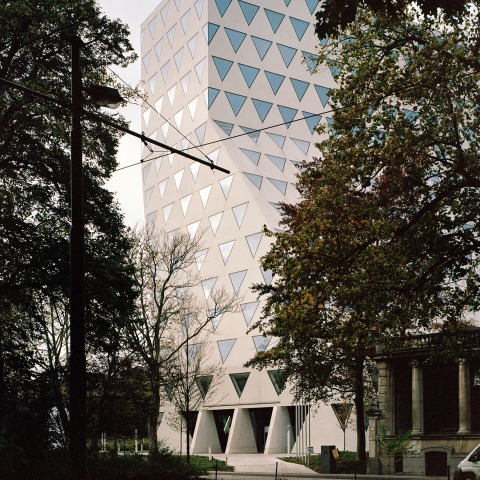The building has a couple of trusses integrated into the concrete side walls and whose triangulation defines the form of the window openings, which are very efficient in their objective of achieving an ideal balance between the entry of daylight and solar overheating. In addition, the torsion of the building as it rises is not a random decision since it reduces the shadow that it casts on the buildings around it.
Description of project by Xaveer De Geyter Architects
The new building replaces a complex of modernist building volumes that used to occupy the entire site and that could not be adapted to today’s sustainability standards. As the Antwerp city centre has few public green surfaces, the transformation of the site from a merely private, mineral and infrastructural area into a public garden is a crucial requirement of the competition brief. Surrounded by fragments of public green, the parcel is key to the formation of a larger, coherent park. Another – contradictory - demand was to maintain a more recent representational pavillion, which was positioned as an obstacle in between the fragments.
By situating the full program in a compact volume across the pavilion, this frontage is cut up and the main entrance is brought close to the street. This large volume, however, divides the park in a front and a back garden. Finally, by rotating the plan around one of its corners as it climbs up, the building shifts towards the centre; existing neighbouring buildings are respected and a sculptural form emerges. During the design process the pavillion building is at last replaced by a glazed volume to house the congress and exhibition part of the programme.
The building is conceived as a bridge structure over and across the pavillion. At the center of the plan one large steel truss spans from one core to the other. Two more trusses are integrated in the concrete side walls and their triangulation defines the form of the window openings. In a next step this window form is applied all over the building as it turns out to be very efficient when it comes to an ideal balance between daylight access and overheating by the sun. The opaque façade is clad in circular, white glass mosaic while the pavilion is a fully transparent box in the park.







































